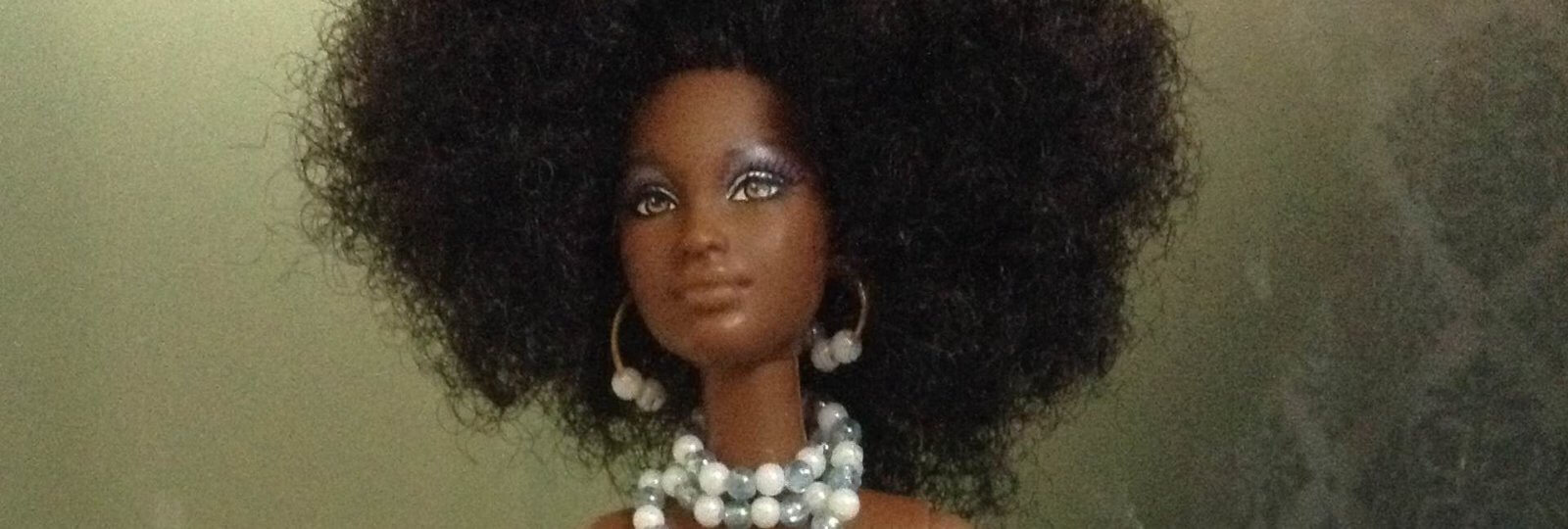

Business
Bringing Diversity to the Toy Box
One mother, Queen Cee Robinson, is revolutionizing playtime by creating dolls that resemble the girls who own them.
This article was made possible because of the generous support of DAME members. We urgently need your help to keep publishing. Will you contribute just $5 a month to support our journalism?
When Queen Cee Robinson’s five-year-old daughter started asking for dolls to play with, the mother of five faced the dilemma many conscious parents today come up against: How can I give my child a toy she loves that doesn’t hurt her self-esteem?
“I was always aware of the lack of diversity in media and entertainment, which is why I never subscribed to buying my daughter dolls. I knew I wouldn’t find any that reflected her—or who she may aspire to be,” says 36-year-old Robinson, who is Jamaican-Canadian and lives in Hamilton, Ontario, with her family. “I told my daughter, ‘I don’t want to buy you dolls that represent any different standard of beauty. When I find dolls with beautiful chocolate skin like you, and different shades of skin like your friends, I will buy them for you.’ But I couldn’t find any,” says Robinson.
The lack of diversity in toys is still very much a problem, even as North America grows increasingly diverse. A search on ToysRUs.com for “black doll” returns with Monster High dolls (a favorite of Robinson’s daughter), a series that features only one character with brown skin. A modified search of “black Barbie” brings up only clothing.
The results on Amazon.com are much better, with a selection of black Barbie memorabilia and infant plush toys with brown skin tones, but you have to click through four pages before you get to the first black doll. Farther still for dolls representing any other ethnicity.
“There really are no options here in Canada for black dolls, which is crazy,” says Robinson. “My community has West Indian, African, White, Filipino, and Chinese. Those are staples. And when it comes to interracial families, that is the norm.”
Eventually Robinson found the Mattel line of So In Style dolls, which come in a variety of skin tones, and whose features are slightly more ethnic than Barbie—fuller lips, angled eyes, and wider noses. She ordered as many as she could and immediately started to dismantle them.
The straight hair was ripped out and restyled into tight curls, dreadlocks, kinky Afros, cornrows, and Afro puffs. She chipped off the factory makeup to give the dolls a more natural look. And the clothing—typically standard-issue short dress and high heels—was scrapped for her handmade career outfits and ceremonial dress representing different cultures.
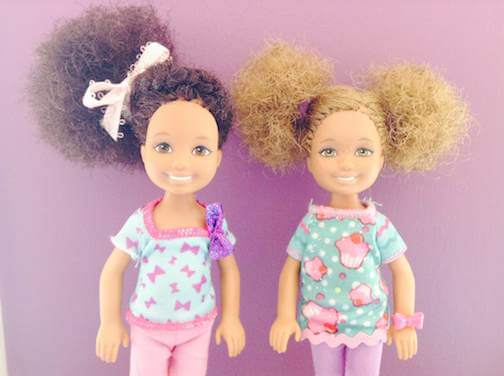
Her daughter squealed with joy when she got her first dolls. And Robinson felt like she could finally give her child playthings that reflected the diversity of the real world.
“Growing up, I was like my daughter, I had the one black Barbie and cherished her,” Robinson says. “But it also made me feel different. Like, why is there just the one?”
So Robinson kept making the dolls for her daughter. Then friends started to ask for them. Then strangers. Soon, she began taking special orders on dolls for families eager to give their children toys that reflect their heritage. She sells them by word-of mouth and publicizes new creations on her Instagram account. Later this month, about a year after she first started making the dolls, she’s opening her first Etsy shop (in the meantime she can be reached through her Facebook page and at [email protected]).
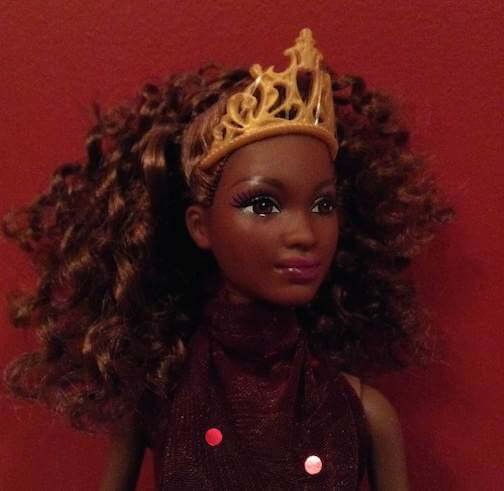
“My specialty is creating different versions of black dolls, but I have had requests for Indian, Asian, and Latina dolls, and I just did a little biracial girl with honey-brown hair and freckles,” Robinson says. “The reaction from the kids is great—they are so excited. But even my adult clients are astounded. Any time you have something that’s an image or a reflection of something you know, it brings a good feeling to people. And I think that’s what all toys for kids should involve.”
Robinson’s reimagining of the dolls isn’t just about diversity in racial makeup—but in giving girls role models that stray from the mainstream princess or fairy iconography. There is a gorgeous, regal queen with a gold-and-Bordeaux-colored gown wearing a crown atop large, cocoa ringlets. But there is also a dreadlocked physician in a lab coat; a biker chick with a voluminous head of ringlets and a pink motorcycle; and a dark-skinned woman in a business outfit with a sleek cut that bears a striking resemblance to Michelle Obama. And the doll with cornrows and a casual sweat suit and sneakers seems to be repping for all the pink-averse girls out there.
“I want girls to understand that they are all individual spirits. What makes them unique makes them special—and that includes the color of their skin and the kinkiness of their hair,” Robinson says. “Kids develop their likes and aspirations through play. And when they don’t see themselves in the characters and toys that they love, their self-esteem suffers. The more options they have, the more comfortable they will be with themselves.”
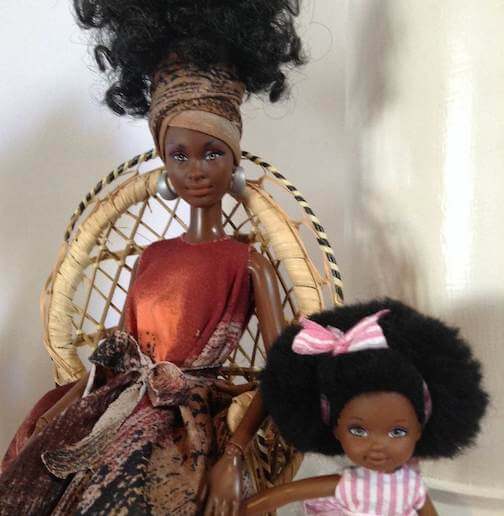
This drive to encourage self-esteem inspires all of Robinson’s work. She’s trained as a singer and musician, but she has fallen into a career of community activism, largely inspired by her daughter and the women in her community.
In 2008 she founded the nonprofit Be-You-tiful Girls Club to introduce Hamilton’s youth to multiculturalism through the arts. The idea spawned from another organization she launched, When Sistahs Get Together, which focused on female empowerment through community activism. During meetings with women, the subject of the youngest females kept coming up.
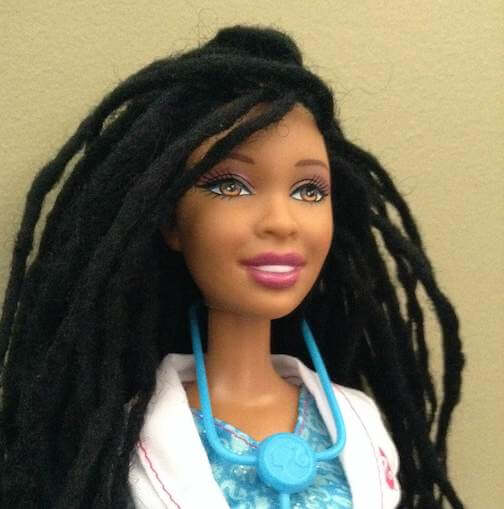
“We can’t expect to progress in our everyday lives and build strong women if we don’t address the grassroots issues, which is girls,” Robinson says. “All girls become women at some point. It’s really important that we empower their minds and teach them about global culture.”
Girls are introduced to dance, art, and literature from around the world and encouraged to develop their own form of creative expression. Recent events have focused on Bollywood dance, tribal jewelry making, creative writing, and henna art.
“There’s a point where girls are no longer pushed to be creative,” Robinson says. “What if a girl wants to be an artist, a photographer, an architect, or a welder? What if she wants to create poetry or play the electric guitar? There are so many barriers telling her, ‘no.’”
Through her community work and the dolls she creates, Robinson is sending a different message: “Anything is possible.”
Before you go, we hope you’ll consider supporting DAME’s journalism.
Today, just tiny number of corporations and billionaire owners are in control the news we watch and read. That influence shapes our culture and our understanding of the world. But at DAME, we serve as a counterbalance by doing things differently. We’re reader funded, which means our only agenda is to serve our readers. No both sides, no false equivalencies, no billionaire interests. Just our mission to publish the information and reporting that help you navigate the most complex issues we face.
But to keep publishing, stay independent and paywall free for all, we urgently need more support. During our Spring Membership drive, we hope you’ll join the community helping to build a more equitable media landscape with a monthly membership of just $5.00 per month or one-time gift in any amount.
















































































